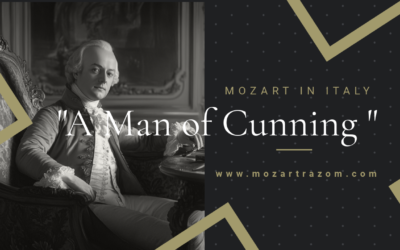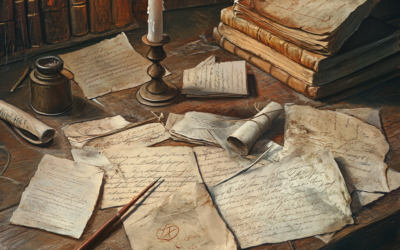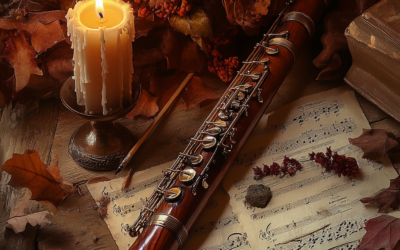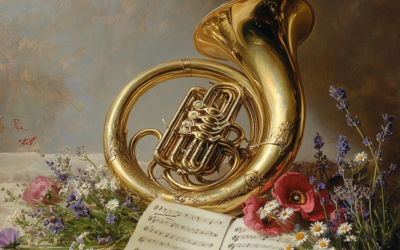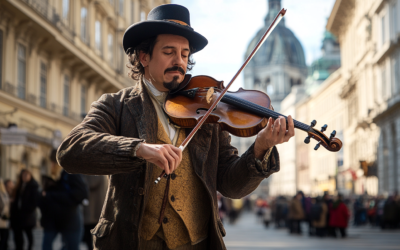The Myth of Mozart’s Sight-Reading Genius
A Closer Examination
In the 18th century, exaggerated accounts of Mozart’s abilities were as common as they were fantastical. Yet, detailed reports from figures like Daines Barrington and André Grétry reveal a far more human side of the prodigy, whose skills, impressive though they were, did not amount to the miraculous feats often attributed to him.
Mozart: The Fall of the Gods
This book offers a fresh and critical look at the life of Wolfgang Amadeus Mozart, challenging the myths that have surrounded him for centuries. We strip away the romanticised image of the “natural genius” and delve into the contradictions within Mozart’s extensive biographies. Backed by nearly 2,000 meticulously sourced citations, this work invites readers to explore a deeper, more complex understanding of Mozart. Perfect for those who wish to question the traditional narrative, this biography is a must-read for serious music lovers and historians.
"Even the most lauded prodigies sometimes hide a kernel of reality beneath layers of myth."
Mozart: The Fall of the Gods
Separating Fact from Fiction in 18th-Century Reports
In the concert posters promoting young Wolfgang Mozart, he was lauded as a prodigy capable of sight-reading even the most difficult pieces flawlessly. Such claims, often more fantastical than credible, warrant closer scrutiny. Two notable contemporary accounts diverge from the usual paternal praise or the laudatory articles seen in 18th-century newspapers. One is a scientific report from London, penned by Daines Barrington (1727–1800), a member of the Royal Society. The report, dating from June 1765, was finalized in 1769 and presented on February 15, 1770, a full five years after the original test.
Barrington was a multifaceted figure: a barrister, antiquarian, and naturalist with a penchant for ornithology and a fascination for musical prodigies. His book, a curious collection of studies ranging from the origins of turkeys to the melodiousness of birds, often employed flowery and exaggerated language. Perhaps Barrington’s fondness for child prodigies contributed to the surge in popularity of such marvels in England. He documented not only the Mozarts but also other youthful musicians like the Wesley brothers and William Crotch. Yet, his approach lacked scientific rigour, often relying on hearsay and questionable sources.
Barrington’s report on Mozart was no exception. In his experiment, he presented a manuscript duet, its composer unspecified, to test Mozart’s sight-reading skills. The piece was from Metastasio’s Demofoonte, arranged for two vocal parts and strings. Curiously, the vocal parts were written in the alto clef, which Barrington highlighted as if it were a major obstacle. Despite this build-up, Wolfgang executed the symphony introduction “masterfully,” as Barrington put it, then sang the upper vocal line while his father Leopold tackled the lower. Leopold faltered, eliciting disapproving looks from his son, who even corrected his mistakes. Barrington claimed that Wolfgang not only sang beautifully but also embellished the accompaniment with violin parts to enhance the musical effect.
A closer analysis reveals that the test was calibrated for both Mozarts, and Wolfgang, not surprisingly, outperformed his father. Stripping away the superlatives, we see that Wolfgang competently played the bass line with his left hand and added occasional violin parts with his right. Impressive for an eight-year-old, certainly, but not the miracle Barrington made it out to be. His comparison of the duet’s difficulty to reading ancient texts like Etruscan and Greek reveals his musical naivety. Instead of a supernatural feat, the performance was a well-practiced skill honed by Leopold to impress the general public.
Even more telling is a different account from André Ernest Modeste Grétry (1741–1813), a professional musician who tested Mozart in Geneva. When Leopold boasted of his son’s sight-reading prowess, Grétry composed a challenging sonata movement in B-flat major. Mozart played it, yet replaced several difficult passages with his own improvisations. The audience, except Grétry, was in awe. Grétry’s skepticism highlighted Wolfgang’s reliance on improvisation and lack of systematic study, a strategy that gave the illusion of mastery.
Mozart’s ability to read music, while exceptional for his age, fell short of true sight-reading as it’s defined today: a flawless, spontaneous execution of written music, requiring years of rigorous training and experience. Grétry’s observations dispel the myth of Mozart’s innate genius, pointing instead to his reliance on quick-thinking and a boldness typical of children.
You May Also Like
#1 A Man of Cunning
In the end, Leopold Mozart’s life was a testament to survival in a world where his talents were often overshadowed by those of his more gifted contemporaries and his own son. While his “Violinschule” remains a notable contribution to music pedagogy, it is clear that Leopold’s legacy is as much about his ability to navigate the challenges of his time as it is about his musical achievements. His story is one of ambition, adaptation, and the lengths to which one man would go to secure his place in history, even if that place was built on borrowed foundations.
@MozartrazoM
Mozart’s Letters: A Legacy of Disappearances, Edits, and Forgeries
Mozart’s letters reveal missing originals, questionable authorship, and forgeries, adding complexity to his legacy.
The Curious Case of Mozart’s “Lullaby”
Though long credited to Mozart, the lullaby “Schlafe mein Prinzchen, schlaf ein” hides a murky history. Initially published by Nissen, Constanze’s second husband, it has endured as one of Mozart’s supposed works—despite a trail of doubts. In 1798, Constanze herself noted sending “another piece of Mozart’s in place of the lullaby,” raising questions about its origins. By the 20th century, researchers revealed it as the work of lesser-known composers, yet it remains deceptively tied to Mozart, its myth surviving through mere footnotes.
Mozart’s Bassoon Concerto: A Question of Authorship
The Bassoon Concerto K.191 raises more questions than it answers. Long thought to have been composed for a Munich bassoonist, new evidence suggests Mozart had no clear performer in mind. The concerto’s disjointed movements and other dubious compositions attributed to Mozart add further complexity to his legacy
The Contradictions Behind Mozart’s Horn Concerto K.412
The authenticity of Mozart’s Horn Concerto K.412 remains hotly debated, as the work bears numerous contradictions in its manuscript history. The first movement may be original, but what about the rest? The inclusion of Franz Xaver Süssmayr and later editorial meddling raises serious questions about what we are really listening to when we hear this ‘Mozart’ concerto.
The Forgotten Viennese Quartets
Attributing Offertorium K.34 to Mozart is not just misleading, it reflects the careless methods used by 19th-century scholars to inflate his legacy. Without an autograph or solid evidence, this work should not be considered part of his output.”


